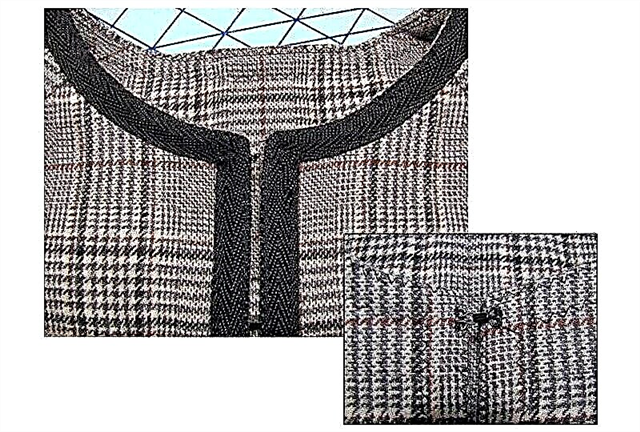To avoid mistakes at the very beginning of the sewing path, you need to understand what is discussed in the sewing instructions or what terms are used in the description of the models.
Reverse stitch

With the help of the reverse function, fastenings are made at the beginning and at the end of the stitch.
To prevent the seam from opening, sew 3-4 stitches back and forward exactly into the seam.
If your sewing machine does not have a reverse function, reverse stitching can be done as follows: turn the fabric 180 ° and lay 3-4 stitches exactly in the seam.
Sweep away

Before grinding, parts of the product must be swept away, this will prevent their displacement relative to each other during sewing on the machine.
You can knit parts not only manually, but also on the sewing machine, setting the maximum stitch length.
Notches

They help to make curved sections more flexible and easier to process. Notches are made through small distances from each other, not reaching the seam 2-3 mm.
Processing oblique and curved slices on an overlock
Additional "holding" seam

It is usually used in the processing of open sections by turning: seam allowances, for example, along the neck or upper edge of trousers or skirts, are tuned to the turning.
Processing of open sections (allowances) of the product

In order for the stitched thing to take on a finished look and please you for a long time, all open sections must be processed in any way possible.
6 ways to process seams without overlock
Pick up fabric

This processing method is used as a decor and to give a particular effect to the product. Thanks to the addition, you can reduce the size (length) of one part relative to another, for example, when you sew a multi-tiered skirt.
How to pick up fabric
Stepped seam allowances

Such allowances are very relevant for jackets, coats, multilayer products. By reducing the width of one of the allowances, the overall thickness of the seam is reduced.
Figured notches

Usually used for concave and rounded seams: cut small triangles at the same distance from each other over the entire allowance, not reaching the seam of about 2 mm.
Raw edge

Either this is a cut of fabric, as in the photo, or unprocessed product allowances.
Right and wrong side of fabric
When cutting, the fabric is folded with the face inward. The contours of the details of the pattern are transferred to the wrong side. They cut off the cut parts folded with their front sides to each other.
Stabilizing seam

In order to prevent stretching and distortion of curved and oblique sections during sewing, it is necessary to lay a stabilizing stitch along the edge of the section. The stitch length should be slightly shorter than the standard.
Seam allowances

The seam allowance is the distance between the stitch and the fabric cut. The standard allowance is 1.5 cm.
Stitch length

The distance that the rack moves the fabric when the sewing machine sews the stitch. Depending on the project and fabric, select the optimal stitch length.
Stitching

It is carried out on the front side of the product. Used for flattening seams, as well as decoration. Finishing stitching can be done either on a sewing machine or manually.
Sewing school: finishing stitch
On oblique, hem, transverse and lobar
- On oblique - a slice made at an angle of 45 °.
- Edge - a finished finished edge on both sides of the fabric, not crumbling. It is carried out on a loom in an industrial way.
- The lobar thread runs parallel to the edge of the fabric.
- Transverse - perpendicular to the edge of the fabric.
Photo: blog.colettehq.com



